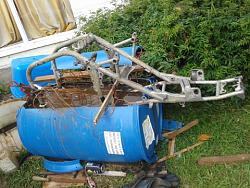Hi Scotsman
You are rightI made it from bits and pieces I had lying around the workshop and not being that into electronics or electrical I tend to use what ever I have to hand. I can't remember where the link cable came from but it fitted the crimps I had that fitted M10 bolts. The crocodile clips and leads were from a old battery charger I found that didnít work so cut them off and used them. Total cost of build was under £20. I quite like the thick cables I could use them to hang it up when not in use
Thank you for viewing and the kind words
The Home Engineer.



 LinkBack URL
LinkBack URL About LinkBacks
About LinkBacks





 Reply With Quote
Reply With Quote



Bookmarks